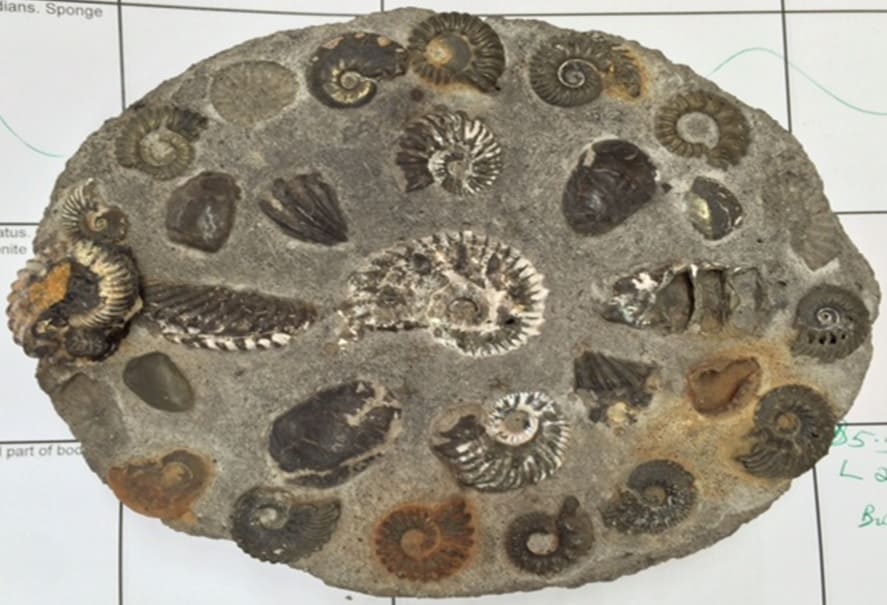Rocks and Fossils 3: fossil pudding
The beach at Folkestone Warren is famous for its fossils. They include intricate, spiral-shaped ammonites and other shellfish.
These sea creatures lived at the same time as the dinosaurs, when the Folkestone area was a warm shallow sea.
Ammonites floated in the sea, feeding off plankton. They could jet away from sharks and other predators by rapidly expelling water from their mouths.
Some ammonites were huge, growing to over a metre in diameter, but many of the best-preserved fossils at Folkestone are tiny, at just 1 to 2cm across.
John Griffiths (1827-1911) was a Victorian fossil dealer, who was also involved in the setting up of Folkestone’s first museum.
He came up with the idea of sticking lots of tiny ammonites (and other fossil shells) in cement to make a ‘fossil pudding.’
He sold the fossil puddings to tourists - not to eat, but as seaside souvenirs.
Fascinating facts
When an animal decays over millions of years, its cells are replaced by minerals. The minerals form within the shape of the animal's body, creating a fossilised version.
For many Folkestone ammonites this mineral was Iron Pyrites. This is also known as Fools' Gold, because foolish people sometimes mistook it for real gold.
When Iron Pyrites is exposed to air and water, the iron in it 'rusts'. This is why you see orange-brown marks around some of the ammonites.

